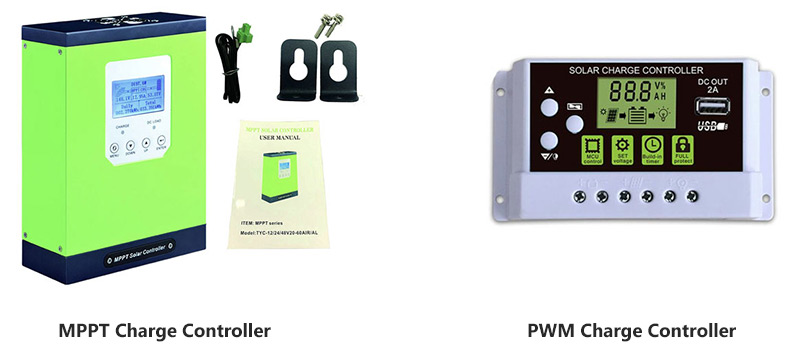Installing a solar charge controller
The solar charge controller should be installed in a well ventilated place, avoiding direct sunlight, high temperature and should not be installed in a place where water can penetrate the solar controller.
To choose the right screws to mount the solar controller on the wall or other platform, the screws should be M4 or M5, and the diameter of the screw cap should be less than 10mm.
Please save enough space between the wall and the solar controller for cooling and connection sequence.
The mounting hole distance is 20-30A(178*178mm), 40A(80*185mm), 50-60A(98*178mm), and the diameter of the mounting hole is 5mm .
For better connection, all the terminals are very tightly connected when packing, please loosen all the terminals.
To avoid short circuit, first screw the battery pack to the controller, then connect the solar panel, and then connect the load.
If a short circuit occurs at the terminal of the controller, it will lead to fire or leakage and must be very careful. (We strongly recommend to connect the fuse on the battery pack side to 1.5 times of the rated current of the controller), after the correct connection is successfully made. When the sunlight is abundant, the LCD will show the solar panel and the arrow from the solar panel to the battery pack will light up.

Solar controller wiring method
- Battery connection
Before connecting the battery, make sure the battery voltage is more than 6V to start the controller. If the system is 24V, make sure the battery voltage is not less than 18V. The system voltage selection is only automatically recognized when the controller is started for the first time.
When installing the insurance, pay attention to the maximum distance of 150mm between the insurance device and the positive terminal of the battery, and turn on the insurance after determining the correct wiring.
Warning: A short circuit in the positive and negative battery terminals and the wires connected to the positive and negative terminals can cause a fire or explosion hazard! Please be sure to operate carefully!
2. Load connection
The load side of the solar charge controller can be connected to a DC power device with the same rated operating voltage as the rated voltage of the battery, and the controller supplies power to the load with the battery voltage.
Connect the positive and negative terminals of the load to the load terminals of the controller. There may be voltage at the load terminal, so the wiring should be done carefully to avoid short circuits from time to time.
A fuse should be connected to the load anode or cathode wire, and the fuse should not be turned on during installation. After the installation, the correctness of the fuse should be determined.
If the load is connected through the switchboard, each load circuit has a separate connection insurance, all the load current can not exceed the rated current of the controller.
3. PV array connection
The solar charge controller can be used for off-grid solar modules of 12V and 24V, and also for grid-connected modules where the open-circuit voltage does not exceed the specified maximum input voltage. The solar module voltage in the system should not be the minimum system voltage.
Warning: Electric shock is dangerous! Photovoltaic arrays may generate very high voltages, so be careful when wiring to prevent electric shock.
4. Check after installation
Check all the connections again to see if the positive and negative terminals of each terminal are correct and if all 6 terminals are tightened.
5. Power on to confirm
When the battery supplies power to the controller, the battery LED indicator on the controller will light up when the controller is started, so pay attention to observe whether it is correct.
Solar controller installation please note points
Wiring order: first to the battery, then to the solar panel, and finally to the load. Note: Be sure to strictly comply with the prescribed wiring order. Due to the confusing order, some controllers may not be able to automatically identify the 12V/24V/48V system, thus making the controller unable to operate normally.
It is better to string a fuse into the battery pack to ensure that the battery will not be short-circuited, otherwise it will cause serious consequences. The specification of the fuse must be 2~3 times of the rated current.
The solar controller should be installed in a dry environment. Even if the controller is completely waterproof, it is best not to be buried in the soil.
